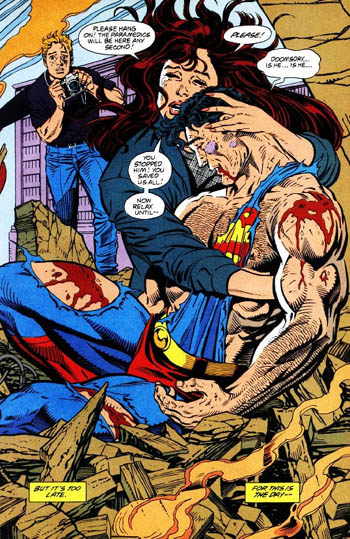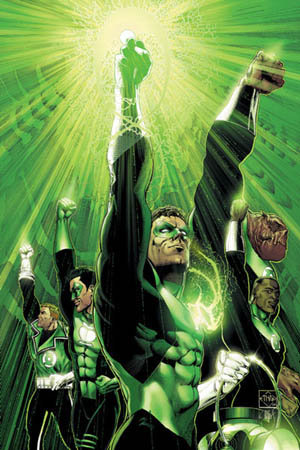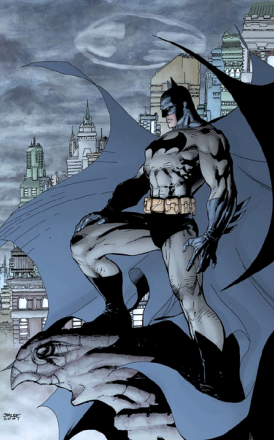
Mitchell Siegel was a sign painter. His life was cut short by someone robbing his store – he died of a heart attack during. His family was devastated, but none more took it to heart than his son, Jerry. Jerry Siegel, a fan of comic strips and sci-fi pulp, would years later co-create what he probably did not assume to carry such iconic potential.
PART ONE: ORIGINS
What Jerry Siegel created was Superman, the first and arguably the epitomic superhero who was “faster than a speeding bullet.” He wore a red and blue costume, with a big “S” logo on his chest. He was super-strong, had intense heat-vision, freezing breath, could fly and was virtually invulnerable (to all but one thing.) But Superman wasn’t just a larger-than-life superhuman, never mind the fact that he wasn’t human, period, but humanoid. He was from Krypton, a distant planet; when the planet was destroyed, he was sent into space by his father in hopes that he would survive, and the shuttle ended up in Kent farm in Kansas, Smallville. It became quickly apparent that the radiation of our solar system’s red sun gave him his abilities. His one weakness, thus, was any type of fragment left of Krypton (“kryptonite”) which deprived him of his powers and incapacitated him.
He also existed with normal humans, moonlighting as Clark Kent, investigative journalist which allowed him to get wind of disasters as they happened. His adoptive parents, the Kents, raise him to be an exemplary human being, perhaps more so since he was not human to begin with. He was instilled with a sense of right and wrong, which guides, for the most part, his actions as Superman. He maintained a double life: crushing on Lois Lane as Clark Kent and defending Metropolis (and on some occasions the entire universe) from imminent threats. His life as Superman invariably complicated his life as Clark Kent, especially since Lois Lane, whom he had a crush on, was more interested in Superman.
As per his position, his foes were also numerous, the most prominent among them being the evil super-genius Lex Luthor. Among others were the Kryptonian General Zod, Darkseid the Lord of Apokalips, or the space-biker Lobo. Each villain had their own ends, often challenging and sometimes coming very close to actually defeating Superman. Their efforts would often concentrate on the civilian populace, themselves lacking in terms of any special ability that would benefit them in a situation like this, and thus depended on Superman to help them.
Superman dies © Wikimedia Commons
Of course, sometimes, Superman, being inhuman yet still far from perfect, either makes mistakes or simply cannot tip the scales. These moments bring forth the danger inherent to what Superman is: a vigilante. Vigilantism is illegal due to its inner contradiction: the vigilante would have to operate outside of the law to protect the law. Superman enjoys being a Kryptonian and an invaluable asset to the planet due to his powers, but others are not so lucky.
The Mark of a Hero
Superman’s case forms pretty much the basis of later superheroes, with the exclusion of some of course, and as such, these heroes share many of his characteristics. Firstly, most heroes have unusual and practical abilities that separate them from the baseline human (“flatscan.”) To elaborate: the Flash is a speedster, gifted with superspeed; the Green Lanterns wear power rings (the first Green Lantern had an actual railroad lantern); Spider-Man has agility, ability to cling to surfaces, proportionately raised strength, and spider-sense that alerts him to danger; Daredevil is blind, but his other senses are extremely heightened and his hearing works basically like sonar. The most notable non-powered superhero is Batman, but it might be argued that his sheer obsessive, psychopathic fixation on his crusade is a superpower in and of itself.
Green Lantern © Wikimedia Commons
Secondly, their abilities were almost invariably thrust upon them, either by way of birth or circumstance, mostly the latter. Jay Garrick is exposed to heavy water, Hal Jordan coincides with the ring, Peter Parker is bitten (somewhat randomly) by a radioactive spider. What makes them heroes is determined by how they choose to employ these abilities, and therein is the third mark of a superhero: conviction and motivation. Superheroes are motivated primarily by a disgust towards evil in all its recognizable forms, a concept of justice and a sense of responsibility to the world around them, because they have more to give than a flatscan, and as such, they must.
Thirdly, most all heroes maintain double lives, secret identities. Primarily, this is to keep their loved ones out of the crossfire, and to not give their enemies a way to hurt them through others. A second reason is a question of, interestingly, identity: with the exception of Superman and the mental exception of Batman, the superheroes’ identity begins when the costume is worn, and ends when it is discarded. Of course, there is often interplay between the two identities, and it is often commented that it is impossible to separate them.
Fourth and final, in attempt to actually exist as two different personalities, and to conceal who they are while reinforcing who they are in that moment, heroes wear costumes, often with masks. Colourful and often utilizing symbols that pertain to the “heroic” identity, the costumes mark the identity of a hero. Their superhero names (Batman, Daredevil, Booster Gold) that are coupled with recognizable, distinctive visuals do not symbolize but rather fully personalize the heroes themselves.
Reality Bites
However, reality, or a more realistic framework would almost completely erase the above. For points in comparison, I will utilize the non super-powered hero, Batman, who is able to do more than just handle a bunch of gang members, and fight crime on a (mostly) nightly basis, having no superpowers but instead just a very large amount of money and handy gadgets?
First and foremost, Batman’s existence is backed by a suspension of disbelief, which goes hand-in-hand with the Rule of Cool. The Rule of Cool, courtesy of TvTropes.org, states that “the limit of the willing suspension of disbelief for a given element is directly proportionate to the element’s awesomeness.” Which means, if a given hero was set up to be able to lift a tank with one hand and use it to smash other tanks nearby, questions such as how he was able to even hold the tank properly in the first place are discarded because it looks good. As such, Batman entering a crowded bar of outlaw bikers and taking each and every one of them down without a scratch on him falls into Rule of Cool – it isn’t questioned. Unfortunately, reality lacks such a safety mechanism and as such, limits, quite severely, what an ordinary human can do even with the best of odds.
Batman © Wikimedia Commons
Second, and in conjunction with the first, Batman’s Rule-of-Cool ability to come out on top of everyday encounters being non-existent also means that there is a greater chance for flatscans to fail to do so. This comes in two shapes: weapons and number of opponents. The most prevalent weapons of criminals, especially in the USA, are guns and knives – both built with the explicit intention to be deadly with one precise strike, against which defensive means (such as Kevlar) is possible, but not ultimate. Disarming the aggressor isn’t a very viable option, either, especially since it is a slim chance that there will be one assailant present, and no matter how efficient, or fast a human being can be, the bar is set very low as to what one person can do against an armed group of ten.
A third problem is that, Rule-of-Cool heroes are recognize as necessary concessions that are still watched pretty closely due to the danger they present, as they are allowed to operate outside of the wall. Batman’s main problem with Gotham PD is usually the sheer amount of police officers who argue that he is, in essence, a criminal himself. A beneficial criminal, but a criminal still. Real-life law enforcement is based on something known as the monopoly of the use of violence, which grants legal rights to use violence to two primary institutions: the military and the police. Anyone doing so who does not belong to either, who does it to enforce the law, is considered a vigilante, which is precisely what a superhero is.
The Fiction
This introduction forms the backdrop of three movies that will be examined. The three were chosen to their willingness to examine, to varying degrees, the real-life implications of a flatscan attempting to be a costumed vigilante. This four-part series does, necessarily, ignore the actual real-life costumed vigilantism that does take place in at least some parts of the USA, but even those instances bear close resemblance to the ideas presented. The movies examined will be: “Kick-Ass” (with a commentary on its sequel that will be based on the central tenets of Kick-Ass 2, the comic book), “Super.” and “Defendor.” Two movies excluded were “Mystery Men” which exists in too fictional a universe to qualify, and “Special” because I just couldn’t watch it for one reason or another.
To be continued…
Advertisement: http://www.geotermija.lt/oro-kondicionieriai






